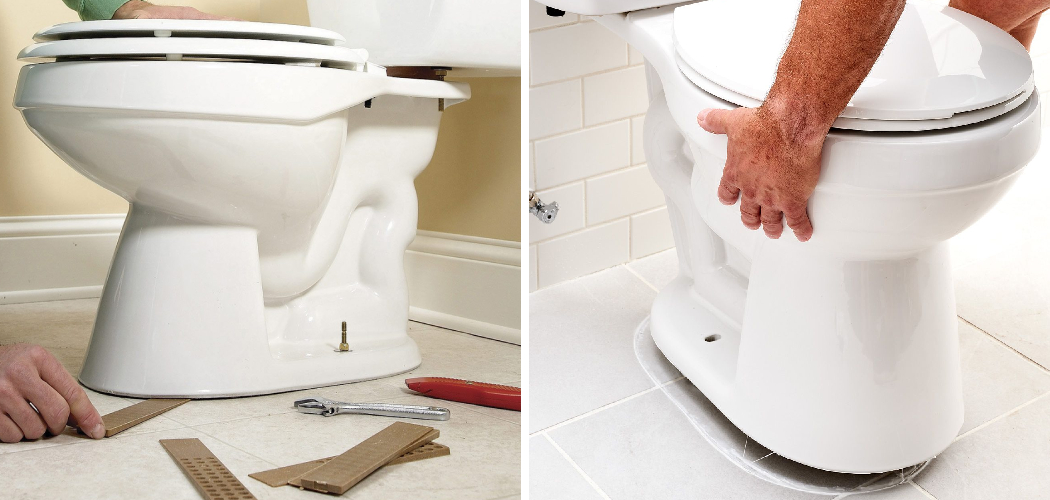A rocking toilet is more than a minor nuisance – it can cause serious damage to your bathroom floor due to the constant shifting of weight. Unsecured toilets can also create an unsafe environment if someone trips or falls while using them.
That’s why it’s important to secure and steady your toilet and learn to stop a toilet from rocking. There are numerous advantages to preventing your toilet from rocking. The most obvious benefit is that it ensures the toilet is securely attached and prevents future issues regarding its foundation.
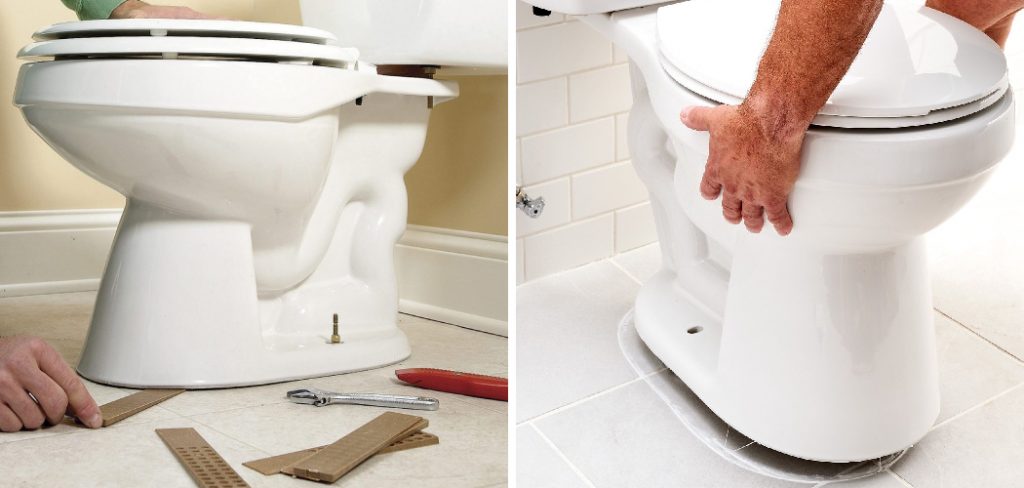
Additionally, a stable toilet prevents leaks and other water damage caused by misalignment of the bowl’s flange seal with the floor or wall. Having a secure and stable toilet will also help ensure that the fixture lasts many years to come. You can find step-by-step instructions on how to stop the toilet from rocking in this blog article.
Step by Step Processes for How to Stop Toilet From Rocking
Step 1: Inspect the Toilet
Before you start, you’ll need to make sure that the toilet is installed properly. Check underneath the flange to ensure that it is secured and properly aligned with the drainpipe. If any of these parts are loose or misaligned, they will need to be tightened or realigned before continuing.
Step 2: Make Sure You Have The Proper Tools
You will need a few tools to make sure you fix the rocking toilet. These include a Phillips head screwdriver, pliers, an adjustable wrench, and silicone sealant. Ensure you have all these tools handy before beginning the repair process. Use your Phillips head screwdriver to loosen the two toilet bolts that are located at the base of the toilet.
You may need to use a pair of pliers or an adjustable wrench for this step, depending on how tight the screws are.
Step 3: Remove The Toilet From The Floor
Once you have loosened the bolts, carefully lift the toilet from the floor and set it aside. Be careful not to disturb any of the piping, as this could cause further damage. Once you have removed the toilet, use a damp cloth to clean around the base. Make sure any debris is cleared away so that it does not interfere with the repair process.
Step 4: Inspect The Floor And Make Any Necessary Repairs
Once you have cleaned the base, inspect the floor for any damage or uneven spots. If there are any cracks or other structural issues, they should be repaired before continuing. Once the floor has been repaired, re-install the toilet on the base. Ensure that it is firmly attached to the ground and that there is no wiggle room between the flange and the toilet seat.
Step 5: Re-Tighten The Toilet Bolts
Now that your toilet is properly installed, you can re-tighten the bolts with your Phillips head screwdriver. Make sure that they are tight enough to keep the toilet in place but not so tight that it could cause further damage.
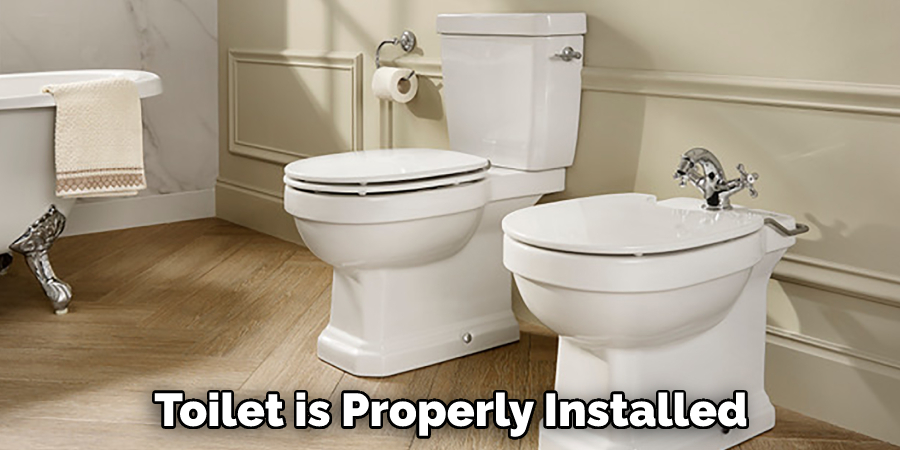
Once the bolts have been tightened, add a thin layer of silicone sealant around the base of the toilet and flange. This will help to keep any moisture from leaking out and prevent water from seeping between the two surfaces.
Step 6: Allow The Sealant To Dry Before Use
Finally, allow the sealant to dry fully before using your newly repaired toilet. This will help to ensure that it is properly sealed and does not create a rocking motion when in use.
By following these steps, you can easily fix a rocking toilet and prevent it from occurring again in the future. Make sure to inspect your toilets regularly and make any necessary repairs as soon as possible so that your bathrooms stay safe and comfortable for everyone.
Precautions for How to Stop Toilet From Rocking
- Make sure to turn off the water supply before working on your toilet. This can help prevent flooding or other water-related damage.
- Wear protective gear such as gloves, eyewear, and long sleeves when handling any of the toilet parts or components during installation or repair. This can help protect you from potential injuries that sharp edges or other hazards may cause.
- Remove the toilet from the floor and inspect for signs of damage, such as cracks, loose bolts, and warped surfaces, before attempting any repairs or adjustments.
- Check the wax seal around the toilet’s base to ensure it’s still secure and intact. If you find any cracks or other signs of damage, replace the wax seal before proceeding with the next steps.
- Ensure that all bolts and nuts are securely tightened to prevent rocking. You may need to use a wrench or socket set if necessary.
- Place shims on both sides of each foot in order to level out the toilet and prevent rocking.
- After installation, check the toilet again for signs of rocking and adjust as necessary.
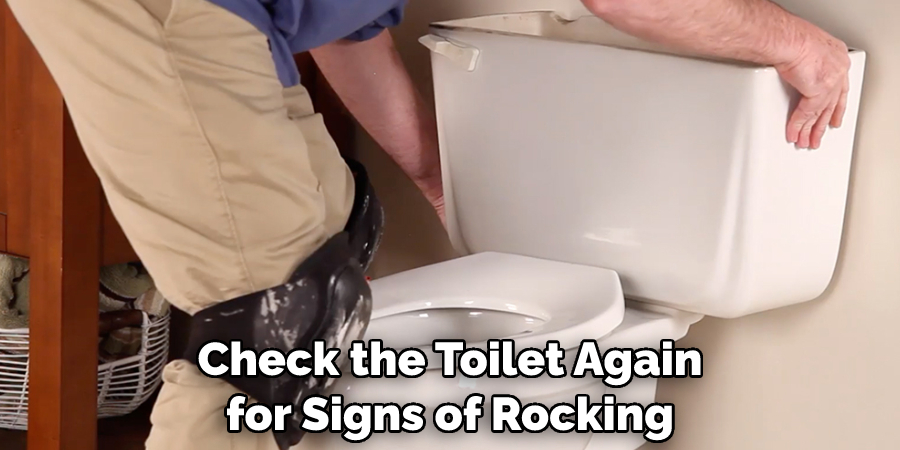
Following these steps can help ensure the stability of your toilet and prevent problems such as rocking or water leaks.
What Are the Common Causes of a Rocking Toilet?
The most common cause of a rocking toilet is an uneven floor. If your bathroom floor is not properly leveled, the toilet may rock when weight is placed on it. Another common cause of a rocking toilet is an improper wax ring seal between the base of the bowl and the flange on the floor.
An incorrect size wax ring can also create a rocking toilet. If the floor is not level or the wax ring hasn’t been installed properly, you may be able to fix the issue by adjusting or replacing these components. This can help prevent further damage to your toilet and flooring, as well as uneven wear on the porcelain of the bowl.
Another common cause of a rocking toilet is loose bolts or nuts that connect the bowl to the floor. If these bolts or nuts become loose, they can create an unsteady foundation and cause your toilet to rock. Tightening them with a wrench should help fix this issue.
Finally, there may be a problem with the flange beneath the toilet. The flange is a circular piece of metal or plastic that sits on the floor and connects the toilet to the waste pipe. If this part is missing, cracked, or damaged, it can cause your toilet to rock. Replacing the flange will help solve this problem.
Will a Toilet Rock if It is Not Perfectly Level?
Yes, even a small amount of rocking can cause problems over time. Toilets should be level and stable to ensure they stay securely in place and are not damaged by the pressure from the water tank or bowl.
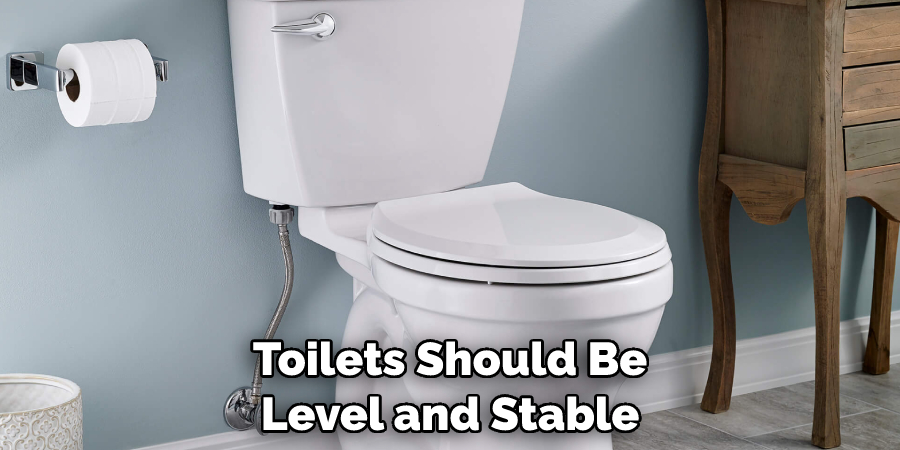
If your toilet is not perfectly level, it will eventually start to rock when someone sits down on it, which can lead to water leaks, damage to the flooring beneath, and an uncomfortable toilet experience.
To stop a rocking toilet, you need to make sure it is level. Start by checking your bathroom floor for any uneven parts that could be causing the rocking. Try leveling some with silicone caulk or self-leveling concrete if you find some.
You can also use shims to fill in any space under the toilet bowl and ensure it is level with the ground. Once you have taken care of any uneven surfaces, you should check the bolts securing your toilet to the floor and adjust them if necessary.
If they are too tight or not evenly distributed, your toilet will be off-balance and prone to rocking. Finally, check the water tank for any debris or buildup that could be throwing your toilet off balance. If you find anything, clear it out with a toilet brush and refill the tank to ensure the weight is evenly distributed throughout.
What Are the Risks if You Don’t Fix a Rocking Toilet?
If a rocking toilet is not fixed, it can cause water to seep out of the wax seal, located between the floor and the base of the toilet. This can lead to water damage on the flooring and surrounding walls. In addition, a rocking toilet can also cause leaking at the connection point between the tank and bowl due to the vibrations.
This could result in water spilling onto the floor and causing further damage. These issues can be expensive to fix and take time. Fixing a rocking toilet as quickly as possible is important to avoid these consequences.
Fortunately, simple steps can be taken to resolve a rocking toilet issue. The first step is to check that the floor flange is secure and properly sealed. If it is loose, then it needs to be tightened or re-sealed. Next, make sure all of the bolts are tight on the bottom of the toilet.
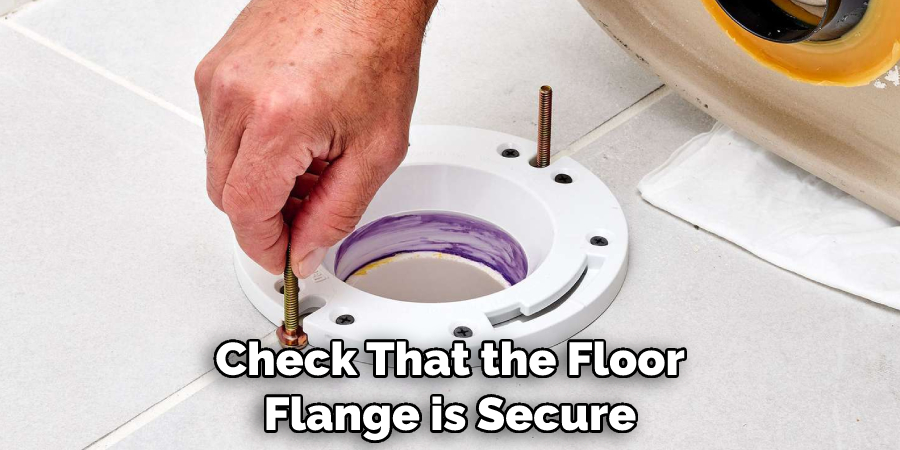
If they are not, use a wrench to tighten them. Lastly, consider adding shims beneath the toilet if the issue persists. This will help to level out the toilet and prevent it from rocking.
Conclusion
The main disadvantage of stopping the toilet from rocking is that it requires some skill and patience to secure the toilet properly. You will need a wrench, screwdriver, shims, and possibly a leveling tool in order to ensure the proper alignment of the toilet. If done incorrectly, you can cause significant damage to your flooring or even break a seal.
In conclusion, preventing your toilet from rocking is actually quite simple. All you need to do is check the base of your toilet and make sure that it’s level with the floor. If it isn’t, you will need to adjust the bolts holding it in place or add shims to lift it up. Doing these steps should ensure that your toilet is stable and stop it from rocking.
I hope reading this post has helped you learn how to stop toilet from rocking. Make sure the safety precautions are carried out in the order listed.

